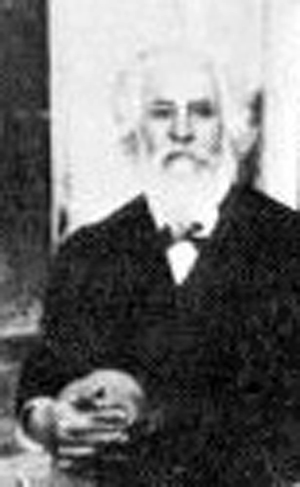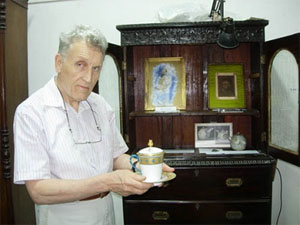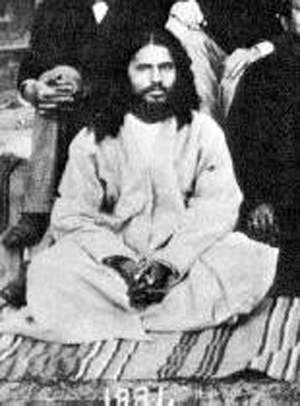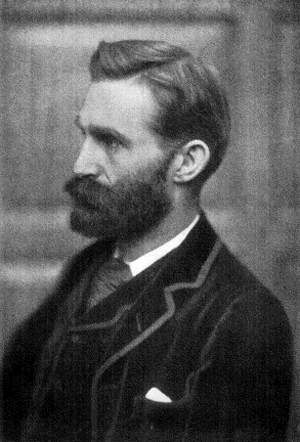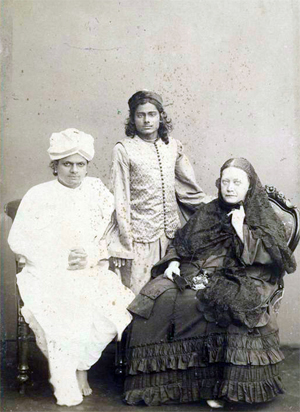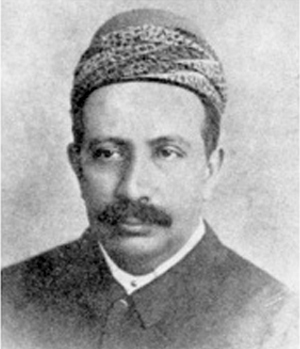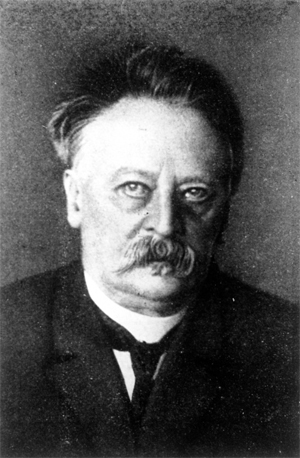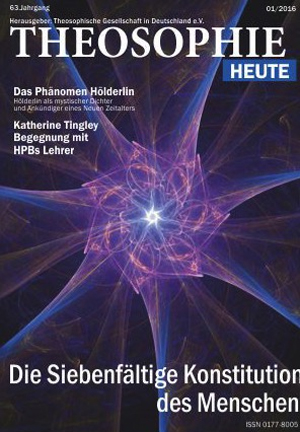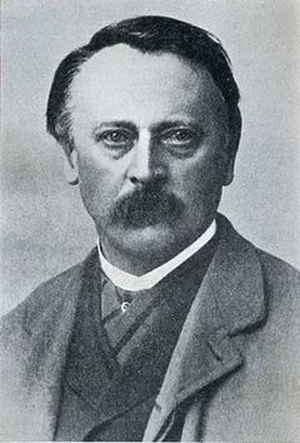William Eglintonby Theosophy Wiki
Accessed: 9/6/20
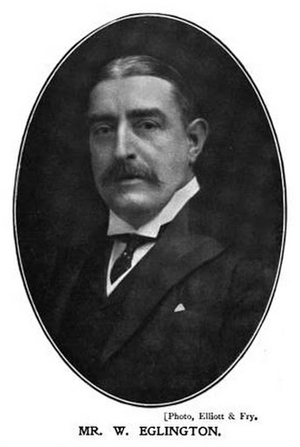
William Eglinton (1857-1933) was a young English medium who went to India with the avowed purpose of investigating Theosophy. After he had studied a few years, Mahatma K.H. visited him in his Māyāvi-Rūpa (or thought-body) on board a ship, and they had a long conversation. According to Readers Guide to The Mahatma Letters to A. P. Sinnett:
Apparently he was an excellent medium but had a number of personal weaknesses. There are indications that KH [Koot Hoomi] intended to bring him to Simla for a period of training so that he could be used in their work, but that after his arrival in Calcutta, KH decided against this and left him there. After a while, Eglinton became disappointed and returned to England in mid-March of 1882 aboard the ship Vega. While he was at sea, KH appeared to him in what is generally referred to as the "Vega Incident." The Mahatmas did not let him join the TS. ML index; D, pp. 185, 199-200; OW, pp. 192-95; LBS, pp 3, 21, 24.[1]
Early lifeEglinton was born on July 10, 1875 , in Islington, North London, England. His mother was from a family of London merchants, while his father was of Scottish descent.
William's education was quite sketchy... as his father evidently had decided to have him pursue a business career. from school he passed into a well-known publishing house of a relative, where he did not stay long, as his psychic gifts were soon to be discovered.
As a boy, he was extremely imaginative, as well as dreamy and sensitive, but, unlike so many other great mediums, he showed no indications of the outstanding power which afterwards became the hallmark of the young man.
He father in early life had renounced Christianity, becoming an Agnostic. His mother, on the other hand, was distinguished by a sweet, gentle piety, and "between the two" he writes, "I was puzzled both ways, and was practically left to solve the problems of life and religious teaching for myself, the result being the acceptance of materialistic notions, and the doctrine of total annihilation."[2]
Eglinton as spiritualistAfter the death of his dear mother in 1873,
William entered the family "circle" by means of which his father was investigating the phenomena of Spiritualism. Up to that time the circle had obtained no results, but when the boy joined it the table rose steadily from the floor, until the sitters had to stand to keep their hands on it. Questions were answered to the satisfaction of those present. The following evening another sitting has held, during which the young lad passed into a trance for the first time. Communications were received which allegedly came from his dead mother. His mediumship now began to develop very rapidly and he reluctantly decided to become a professional medium. Finally, he had to adopt this course in 1875.
Eglinton soon became one of the most respected mediums of the day and apparently never resorted to trickery to produce phenomenal occurrences, which so any mediums found it expedient to do.
Early in 1881 Eglinton sailed for Calcutta, where he had some friends among whom was a wealthy merchant, J. G. Meugens, who received him as his guest. Eglinton soon became the center of the Spiritualists in that city, and a magazine called Psychic Notes was published for a short time, describing his séances and other psychic manifestations[3]
Eglinton worked as a secretary at Simla for a while, and then in a London publishing company. After that firm dissolved in 1883:
He turned once again to mediumship for a living, and began a career which spread his fame throughout the world. He gave séances at the home of Mr. Sam Ward, the uncle of the well-known writer of occult novels, F. Marion Crawford, whose book, Mr. Isaacs, dealt with the subject of the existence of the Mahâtmans. It was at Mr. Ward's home that he me A. P. Sinnett for the first time.
Many prominent members of the Society for Psychical Research attended his séances, among whom were E. Dawson Rogers, the Hon. Percy Wyndham, C. C. Massey, who had been one of the seventeen Founders of the Theosophical Society and the famous homeopath Dr. George Wyld, who figured in the early history of the T.S. [4]
C. W. Leadbeater on EglintonIn the course of my inquiries into Spiritualism I had come into contact with most of the prominent mediums of that day, and had seen every one of the ordinary phenomena about which one reads in books upon that subject. One medium with whom I had much to do was Mr. Eglinton; and although I have heard stories told against him, I must bear witness that in all my own dealings with him I found him most straightforward, reasonable and courteous. He had various so-called controls - one a Red Indian girl who called herself Daisy, and chattered volubly on all occasions, appropriate or inappropriate. Another was a tall Arab, named Abdallah, considerably over six feet, who never said anything, but produced remarkable phenomema, and often exhibited feats showing great strength. I have seen him simultaneously lift two heavy men, one in each hand. A third control who frequently put in an appearance was Ernest; he comparatively rarely materialized, but frequently spoke with direct voice, and wrote a characteristic and well-educated hand.[5]
Encounter with Mahatma K. H.Eglinton received the visit of Mahatma K. H. when on board of the S. S. Vega, in what is known as "The Vega Incident". The Mahatma foretold A. P. Sinnett about this in a letter he wrote in March 1882:
For reasons that you will appreciate, though at first you will be inclined to consider (in regard to yourself) unjust, I am determined to do that, for once, which hitherto I have never done; namely, to personate myself under another form, and, perhaps — character. Therefore, you need not grudge Eglington the pleasure of seeing me personally, to talk with me, and — be "dumbfounded" by me, and with the results of my visit to him, on board, "The Vega." This will be done between the 21st and the 22nd of this month. . .[6]
It is important to notice in the above that the Master did not intend to appear in his real form. He explains this further by saying: "He will see somebody quite different from the real K.H., though it will still be K.H."[7] As to one of the reasons why Mahatma K. H. decided to this this, he explains in the same letter: "Theosophy and its adherents have to be vindicated at last."
When on board of the "S. S. Vega", Eglinton did receive the visit of the Master, and wrote the following account:
Shortly after leaving Colombo, about 10 or 10:30 in the evening, I was in my cabin which was on deck forward, preparing to turn in for the night, when what I thought to be a Hindoo servant appeared at the door. Speaking in Hindustani, I told him to go away, but to my surprise he replied to me in perfect English, and stepping forward, gave me the grip of a Master Mason. This astounded me, and I asked his name, when he replied that he was one of the Himalayan Brothers and had come from Thibet to prove that such beings really existed. I entered into a long talk with him, much of which I cannot detail for obvious reasons. He was a well-formed, distinct, living, human being, and I knew of no such person on board. He gave me such evidence as satisfied me he must be the much-talked-of Koot Hoomi lal Singh, and that there was no longer room for doubt.[8]
Notwithstanding this visit, Eglinton refused to accept the Theosophical theory that most spiritualistic manifestations are not due to the spirits of the departed. Eventually, he would reinterpret his experience in terms of his spiritualistic beliefs, as can be seen in an article published on January 30, 1886, where he recounts the Master's visit:
My more matured conclusions, arrived at, by the way, long before (as many of my friends are perfectly aware) the "Collapse of Koot Hoomi," regarding the "appearance" and the transmission of the letter, are: (1) That the figure I saw may have been a spontaneous materialisation of an unusual character, although it was unaccompanied by any sensation of fatigue on my part, there being no reason why it should not have been an "intelligence" or "spirit" of someone who dubbed himself "Koot Hoomi" (we know vanity is not entirely eliminated from those who have reached the higher life, as witness the large number of communications purporting to come from Shakespeare and others!); and (2) that the letter may, with every reason, have been taken by spiritual agency to India without the intervention of the "astral" aid of the Himalayan Adept, since at least thirty or forty letters had been similarly carried between England and India and vice versa during my residence in the latter country.[9]
Spirit guide "Ernest"The first spirit guide William Eglinton had when he started his mediumistic practice was a spirit calling himself "Joey Sandy," who was able to materialize his white-robed form. Eighteen months later another guide, "Ernest," appeared, with the ability to materialize and also to transport objects.
Delivery of lettersClaims were made that Ernest was able to deliver objects between London and Calcutta:
According to the narrative of a Mr. Meugens, privately marked sheets of paper were whisked by the spirits to London and returned shortly after to Calcutta with the handwriting of a close friend describing how his room had been suddenly filled with light and how the spirit "Ernest" stood by and waited for the letter to carry it back. It was claimed that this happened on several occasions. Indeed, once Meugens asked that the ring of a Mrs. Fletcher, who was then in Tothill Fields Prison (in Meugens's belief unjustly convicted), be brought to him. The spirits complied. The ring could not be identified, but a few days later the spirits brought a letter in Fletcher's own handwriting telling Meugens that she had sent the ring.[10]
Ernest and C. W. LeadbeaterAt a time when C. W. Leadbeater was investigating spiritualistic phenomena, he came across Mr. Sinnett's writings, and became interested in Theosophy and the Mahatmas. Below, is his report of a conversation with Ernest during a séance:
One day in conversation with him something was said in reference to the Masters of the Wisdom; Ernest spoke of Them with the most profound reverence, and said that he on various occasions had the privilege of seeing Them. I at once enquired whether he was prepared to take charge of any message or letter for Them, and he said that he would willingly do so, and would deliver it when opportunity offered, but he could not say exactly when that would be.
When Mr. Eglinton came out of his trance, I asked him how I could send a letter to Ernest, and he said at once that if I would let him have the letter he would put it in a certain box which hung against the wall, from which Ernest would take it when he wished.[11]
The letter was written, put in the box Mr. Eglinton kept for communications with the spirit guides, and after a few days the letter disappeared from the box. When asked about this, Ernest stated that it had been duly delivered. For over six months C. W. Leadbeater did not hear back from any of the Masters, until finally he received an answer from Mahatma K.H., who said:
Last spring – March the 3rd – you wrote a letter to me and entrusted it to “Ernest”. Tho' the paper itself never reached me – nor was it ever likely to, considering the nature of the messenger – its contents have.[12]
Regarding the nature of Ernest, C. W. Leadbeater remarked:
I may mention here that in connection with this I had later a good example of the unreliability of all such communications. Some considerable time afterwards some spiritualist wrote to Light explaining that there could not possibly be such persons as the Masters, because Ernest had positively told him that there were not. I wrote to the same newspaper to say that I had it on precisely the same valueless authority that there were Masters, and that Ernest knew Them well. In each case Ernest had evidently reflected the thought of the questioner, as such entities so often do.[13]
Later yearsIn the 1930s, Eglinton was editor of The New Age, and director of a firm of British exporters. He died on March 10, 1933.[14]
Additional resources• Spiritualism and Theosophy by William Eglinton at Blavatsky Study Center.
• Mr. Eglinton and "Koot Hoomi" by William Eglinton at Blavatsky Study Center.
• Farmer, John S. Twixt Two Worlds.
• Eek, Sven. Damodar and the Pioneers of the Theosophical Movement. Pages 185=191 discusses the Vega incident.
Notes1. George E. Linton and Virginia Hanson, eds., Readers Guide to The Mahatma Letters to A. P. Sinnett (Adyar, Chennai, India: Theosophical Publishing House, 1972), 219.
2. Boris de Zirkoff, "Bibliography: Eglinton, William," H. P. Blavatsky Collected Writings 1881-1882 Volume III. (Wheaton, IL: Theosophical Publishing House, 1968), 503-504.
3. Boris de Zirkoff, 504.
4. Boris de Zirkoff, 504-505.
5. Charles Webster Leadbeater, How Theosophy came unto me (???), ???
6. Vicente Hao Chin, Jr., The Mahatma Letters to A.P. Sinnett in chronological sequence No. 55 (Quezon City: Theosophical Publishing House, 1993), 151.
7. Vicente Hao Chin, Jr., The Mahatma Letters to A.P. Sinnett in chronological sequence No. 55 (Quezon City: Theosophical Publishing House, 1993), 151.
8. William Eglinton, Light (London: ????, June 24, 1882), 301-302.
9. William Eglinton, Light (London: ????, January 30, 1886), 50-51.
10. William Eglinton at Gale Encyclopedia of Occultism & Parapsychology
11. Charles Webster Leadbeater, How Theosophy came unto me (???), ???
12. Curuppumullage Jinarajadasa, Letters from the Masters of the Wisdom vol. 1, No. 6 (Adyar, Madras: Theosophical Publishing House, ???), ???.
13. Charles Webster Leadbeater, How Theosophy came unto me (???), ???
14. Boris de Zirkoff, 505.
*********************************
William Eglintonby Wikipedia
Accessed: 9/6/20
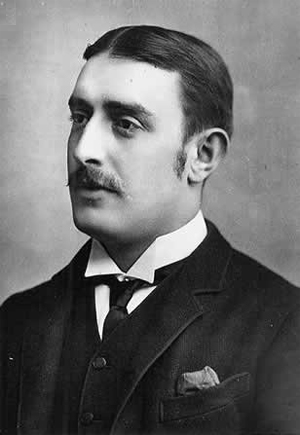 William Eglinton
William Eglinton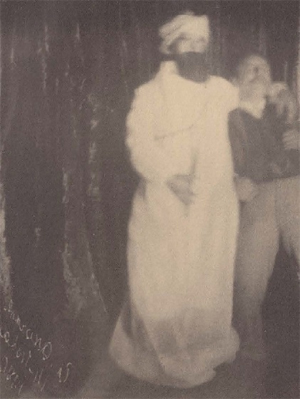 Eglinton with "Abdullah"
Eglinton with "Abdullah"William Eglinton (1857–1933), also known as William Eglington was a British spiritualist medium who was exposed as a fraud.[1][2][3][4]
BiographyEglinton was born in Islington, London. He claimed to materialize spirits in his séances.[5] It was discovered that the materializations were fakes.[6]
In 1876, Eglinton was exposed as a fraud when the psychical researcher Thomas Colley seized the "spirit" materialization known as "Abdullah" and cut off a portion of its cloak. It was discovered that the cut piece matched a cloth found in Eglinton's suitcase.[7] Colley also pulled the beard off the materialization and it was revealed to be a fake, the same as another one found in the suitcase of Eglinton.[8] In 1886 the spiritualist John Stephen Farmer wrote a supportive biography of Eglinton.[9]
Eglinton performed slate writing mediumship and his leading critics were the psychical researchers Eleanor Sidgwick and Richard Hodgson.[10] In 1886 and 1887 a series of publications by S. J. Davey, Hodgson and Sidgwick in the Journal for
the Society for Psychical Research exposed the slate writing tricks of Eglinton.[11] Due to the critical papers, Stainton Moses and other prominent spiritualist members resigned from the SPR.[12][13]
Hereward Carrington has written that Eglinton was involved with Madame Blavatsky in producing fraudulent Mahatma letters.[1] Frank Podmore wrote that "Eglinton had on at least two occasions been detected in fraudulently simulating occult phenomena... Moreover, several observers claimed to have seen Eglinton actually writing on the slates with his own hands." Professor Carvill Lewis during a séance with Eglinton heard him write on the slates and observed writing movements.[14] Lewis had also discovered that Eglinton had looked up answers to questions in a dictionary.[15]
Alleged levitationIn 1882, the American magician Harry Kellar was baffled by an alleged levitation of Eglinton.[16] Massimo Polidoro has written that Kellar did not "impose any form of control" and "couldn't see anything" in the dark séance room but still convinced himself Eglinton levitated.[3] According to the magician Harry Houdini although Kellar was originally baffled by Eglinton's levitation when he gave the subject fuller consideration he was able to reproduce the same phenomena by trickery.[17] Houdini wrote "it was not strange that Kellar did not detect Eglinton's method instantly nor is it strange that he acknowledged that he was baffled. No magician is immune from being deceived and it is no way beneath a magician's dignity or demeaning to professional reputation to openly admit that he cannot always account for what he thinks he sees."[18] Magic historian Barry Wiley wrote that Eglinton was exposed as a fraud several years later.[16]
See also• Francis Ward Monck
References1. Hereward Carrington. (1907). The Physical Phenomena of Spiritualism. Herbert B. Turner & Co. pp. 84–90
2. Simeon Edmunds. (1966). Spiritualism: A Critical Survey. Aquarian Press. p. 105. ISBN 978-0850300130 "1876 also saw the first of several exposures of another physical medium, William Eglington, in whose trunk a false beard and a quantity of muslin were found by Archdeacon Colley. He was exposed again in 1880, after which he turned to slate-writing. In this he was exposed by Richard Hodgson and S. J. Davey of the SPR in 1885. Davey a clever conjuror, was able to duplicate all Eglington's phenomena so perfectly that some spiritualists, notably Alfred Russel Wallace, insisted that he too was really a genuine medium."
3. Massimo Polidoro. (2001). Final Séance: The Strange Friendship Between Houdini and Conan Doyle. Prometheus Books. p. 51. ISBN 978-1573928960
4. Paul Kurtz. (1985). A Skeptic's Handbook of Parapsychology. Prometheus Books. p. 277. ISBN 978-0879753009 "The most important bogus medium in history was William Eglinton, who began his corrupt activities in adolescence. Important because the ultimate effect of his slate-writing trickery was to revolutionize psychical investigations."
5. Raymond Buckland. (2005). The Spirit Book: The Encyclopedia of Clairvoyance, Channeling, and Spirit Communication. Visible Ink Press. p. 125. ISBN 978-1578592135
6. Montague Summers. (2010). Physical Phenomena of Mysticism. Kessinger Publishing. p. 114. ISBN 978-1161363654
7. Joseph McCabe. (1920). Is Spiritualism based on Fraud?: The Evidence Given by Sir A.C. Doyle and Others Drastically Examined. London: Watts & Co. p. 115. "The English medium Eglinton adopted and improved his methods, and he was one of the bright stars of the Spiritualist world for twenty years. He was detected in fraud as early as 1876. At that time he gave materialization-stances, at which the ghostly form of "Abdullah" appeared. Archdeacon Colley found the beard and draperies of Abdullah in his trunk."
8. Roy Stemman. (1976). The Supernatural. Danbury Press. p. 62
9. John Stephen Farmer. (1886). Twixt Two Worlds: A Narrative of the Life and Work of William Eglinton. The Psychological Press, London.
10. Ronald Pearsall. (1972). The Table-Rappers. Book Club Associates. pp. 109–110. "The leading exponent of slate writing was William Eglinton; his leading critics were Mrs Sidgwick and Richard Hodgson. Hodgson had created a stir by his expose of theosophy, and neither he nor Mrs Sidgwick was impressed by Eglinton."
11. Janet Oppenheim. (1988). The Other World: Spiritualism and Psychical Research in England, 1850–1914. Cambridge University Press. pp. 139–140. ISBN 978-0521347679
12. Roger Luckhurst. (2002). The Invention of Telepathy, 1870–1901. Oxford University Press. p. 57. ISBN 978-0199249626
13. Rhodri Hayward. (2014). Resisting History: Religious Transcendence and the Invention of the Unconscious. Manchester University Press. p. 47. ISBN 978-0719095375
14. Frank Podmore. (2011 edition, originally published 1902). Modern Spiritualism: A History and a Criticism. Volume 2. Cambridge University Press. p. 206. ISBN 978-1108072588
15. Georgina Byrne. (2010). Modern Spiritualism and the Church of England, 1850–1939. Boydell Press. p. 52. ISBN 978-1843835899
16. Barry Wiley. (2012). The Thought Reader Craze: Victorian Science at the Enchanted Boundary. McFarland. p. 35. ISBN 978-0786464708
17. Harry Houdini. (1922). Spirit Compacts Unfilled. The Sun. 30 October.
18. Harry Houdini. (2011 edition, originally published 1924). A Magician Among the Spirits. Cambridge University Press. p. 263. ISBN 978-1108027489
Further reading• W. W. Baggally. (1905). Private Meeting for Members and Associates. Journal of the Society for Psychical Research 12: 9-10. (Baggally describes how he observed Eglinton's trickery)
• Edward Clodd. (1917). The Question: A Brief History and Examination of Modern Spiritualism. Grant Richards, London. pp. 50–106
• Carvill Lewis. (1887). The Alleged Physical Phenomena of Spiritualism: An Account of Two Séances. Journal of the Society for Psychical Research. Part XI.
• Walter Mann. (1919). The Follies and Frauds of Spiritualism. Rationalist Association. London: Watts & Co. pp. 66–69
• Eleanor Sidgwick. (1886). Mr. Eglinton. Journal of the Society for Psychical Research 2: 282–334.
External links• Spiritualism and Theosophy by William Eglinton
*****************************
The Vega Incidentby Theosophy Wiki
Accessed: 9/6/20
The Vega Incident refers to the visitation by the Mahatma K. H. to the Spiritualist William Eglinton on March 22, 1882, when the latter was on board the ship S. S. Vega, and H. P. Blavatsky was in India. Following the conversation between the Mahatma and Eglinton there was an exchange of letters by phenomenal means between the ship and a group of members at Calcutta.ContextThe introductory note to the letter No. 55 of the chronological edition of The Mahatma Letters to A. P. Sinnett says:
This letter concerns the young English medium, William Eglinton (1857-1933) who went to India with the avowed purpose of investigating Theosophy. He had heard of Madame Blavatsky and the “Brothers” and he wanted to find out for himself whether she was reliable and the Brothers real beings, or whether the whole thing was a hoax. He refused to believe in the “Brothers” because his “Guide” (Ernest) had not informed him of their existence, and he considered H.P.B. just another medium who pretended to be something higher. In India he was at this time staying with Lt. Col. and Mrs. W. Gordon, who lived in Howrah, a suburb of Calcutta. The Gordons were spiritualists, but also members of the Theosophical Society, devoted to H.P.B. and Olcott and loyal to the Society. However, Eglinton saw nothing of either Col. Olcott or H.P.B. all the time he was in India and was not to meet them until two years later, when they were in London. . . . He returned to England sailing on March 15, 1882, on the SS Vega, still skeptical concerning the existence of the Mahatmas. On the 22nd, some hours after the Vega had left Ceylon (its first port of call out of India) K.H. visited Eglinton in his Mayavi-Rupa and they had a long conversation. [1]
The IncidentThe Vega Incident consisted of Master K.H. appearing on March 22, 1882, in his mayavi rupa to Eglinton, who was on board of the S. S. Vega some hours after it had left Ceylon. The two shook hands and held a conversation.
Col. Olcott was staying at the Gordon's house in Howrah, Calcutta, India. In the night of the 22nd, he had an intimation from his teacher about Master K.H. visitation. He told this to Mrs. Gordon the following morning. On that day arrived a telegram written by H.P.B. on the 22nd, saying that K.H. had seen Eglinton on the Vega.
A later telegram asked the Gordons and Olcott to fix a time when they could be together. On the 24th, the three sat in a triangle with the apex to the north. After a few minutes, Olcott saw through the open window the Mahatmas M. and K.H. One of them pointed into the room, over Mrs. Gordon’s head, and a letter dropped. The Mahatmas then vanished. Mrs. Gordon picked up what had fallen on her and found a letter in Mr. Eglinton’s handwriting, dated on the Vega the 24th; a message from Madame Blavatsky, dated at Bombay on the 24th, written on the backs of three of her visiting cards. There was also a larger card, such as the ones used by Mr. Eglinton at his seances. On this latter card was the well-known handwriting of Master K.H. and a few words in the handwriting of Master M. All these cards and the letter were threaded together with a piece of blue sewing silk. The letter from Eglinton follows and affirms his now “complete belief” in the "Brothers." As an additional interesting note, there was a postscript signed by six persons affirming that they had seen the arrival, in Bombay, of the letter from Eglinton.
Mahatma K. H. on his coming visitationIn a letter to A. P. Sinnett written in March, 1882, Mahatma K. H. told him about his plan to visit Eglinton:
For reasons that you will appreciate, though at first you will be inclined to consider (in regard to yourself) unjust, I am determined to do that, for once, which hitherto I have never done; namely, to personate myself under another form, and, perhaps — character. Therefore, you need not grudge Eglington the pleasure of seeing me personally, to talk with me, and — be "dumbfounded" by me, and with the results of my visit to him, on board, "The Vega." This will be done between the 21st and the 22nd of this month. . . He will see somebody quite different from the real K.H., though it will still be K.H[2]
In the same letter, Mahatma K. H. explains one of the reasons why he decided to do this:
. . . Theosophy and its adherents have to be vindicated at last. Eglinton is going home; and were he upon his return to know nothing of the Brothers, there would be a sore day of trial for poor old H.P.B. and H.S.O.[3]
For this purpose, the Mahatmas waited until Eglinton was away from H. P. Blavatsky, to prevent accusations of fraud:
We [had] very good reasons to forbid H.P.B. to either correspond with him, or take too much notice of him in the Theosophist. But now that he is gone, and will be on the 22nd hundreds of miles away at sea; and that no suspicion of fraud can be brought against either of them, the time for the experiment has come.[4]
The visitation took place on March 22, 1882, when Eglinton was on board of the S. S. Vega.
Account by W. EglintonThe following is Eglinton's account of this visitation:
It was not until the last week of my stay in India that I began to receive evidence of the existence of the beings designated the "Himalayan Brothers." One night I was sitting with Colonel and Mrs. Gordon at their house in Howrah [a suburb of Calcutta] when my [spirit] guide, "Ernest," came and informed us that he had been in communication with certain of the Brotherhood. This aroused my curiosity, because I knew I could depend upon a statement so made, but nothing more happened to convince me until I was homeward bound on board the S. S. Vega.
On the 22nd March, 1882, I was at sea, having left [Colombo,] Ceylon about 6 p.m. the same day. I occupied a deck cabin forward under the bridge. About ten o'clock I was in this cabin undressing preparatory to sleeping on deck, my back being to the open door. On turning round to make my exit, I found the entrance barred by what I took, at first sight, to be a khitmaghur or native butler.
Thinking he had come on some message, I waited for him to speak, but as he did not do so, and deeming his manner insolent from his not having demanded entrance, and not paying the deference usual to Europeans, I angrily told him, in Hindustani, to go away; whereupon he stepped into the cabin, grasped me by the right hand, and gave me the grip of a Master Mason before I had sufficiently recovered from my astonishment. I requested him to tell me why he had intruded upon me and to state his business.
Speaking in perfect English, he deliberately informed me he was "Koot Hoomi Lal Singh," and I was at the moment so profoundly impressed with his general appearance, his knowledge of Freemasonry, and the statement that he really was the person, mystic, or Adept of whom I had heard so much during my residence in India, that without hesitation I accepted him as such. We then entered into conversation of some length, of no particular importance to anyone but myself, but it proved to me that he was intimately acquainted with both the Spiritualistic and Theosophical movements, as well as with friends of mine in India.
He was in every respect an intelligent man, perfectly formed, and in nowise differing, in outward semblance at any rate, from the thousands of natives one sees in the East. Nor was it hallucination, for I was in full possession of all my faculties; and that it was not a subjective vision is proved by the grasp of the hand, and the very evident materiality of the figure. Some little thing attracted my attention from him for a moment, for I was criticizing him keenly, and when I turned my head again—he was gone! Two steps took me to the open door, where I had the advantage of scanning both the fore and aft decks, but I could observe no one in the act of retreating, although no living being could have in the time escaped from the range of my vision.
The next day I searched the ship, even going down into the shaft tunnel to find a person in appearance like the man I had seen on the previous night, but without obtaining the slightest clue to his identity, although my mind was then dwelling upon the possibility of a man having been commissioned to come on board at Ceylon on purpose to deceive me. But the more I reflected the more difficult I found it to accept such a theory, and two days after I penned the hasty and enthusiastic letter which appears in The Occult World.
"Koot Hoomi" had promised to take a letter to Mrs. Gordon, at Howrah, if I would write one when on board. I thought my having seen the "figure" a good opportunity to convey the news in the manner suggested, and I accordingly wrote, asserting my complete belief that the person I had seen was none other than the Great Master. After I had written the letter, I went onto the deck, and knowing a certain lady to be on board who was much interested in psychical matters, I read her the letter, and invited her to mark the envelope as a little test between ourselves and those at the "other end of the line." This she did.
On my return to the smoking room I told some of my fellow passengers what I had done, whereupon a gentleman who claimed to be a Theosophist and acquainted with Madame Blavatsky, asked why, if I could send a letter, could he not do the same? I saw no objection to his doing so, and he at once wrote a short note. I opened the envelope and enclosed both letters in another, and again sought the lady to re-mark it. She was not on the deck at the time, so I returned to the smoking room, and on mentioning the matter to those assembled, one said, "Put a cross upon it"; another remarked, "Add a second"; and a third person wished that three crosses should be put. As each one spoke I added the cross, until there were three in all, and I then took the envelope, placed it in my locked writing case, and put it (the case) upon a shelf in my cabin. I opened it at intervals to see whether the envelope was still there, and I last saw it, to the best of my recollection, about four p.m., for when I looked again just before dinner it was gone.
The same night, in the presence of Colonel Olcott and Colonel and Mrs. Gordon, an envelope marked with three crosses and stated to contain my letter, was dropped from the ceiling of the bedroom I had occupied when at Howrah. I have not been able to verify whether the letter was in my writing, but I imagine it to be mine as the letter was similar in terms to the one written by me—in addition to which Mrs. Gordon was intimately acquainted with my writing.[5]
Account by Mrs. Alice GordonOn the 24th, two days after Master K.H. visited Eglinton in his Mayavi-Rupa, when the Vega was 500 miles out at sea, letters were transmitted from the Vega to Bombay; and from there (along with some other items) to Howrah, to the home of Col. and Mrs. Gordon.
Mrs. Alice Gordon wrote:
Colonel Olcott told me that he had had an intimation in the night from his Chohan (teacher) that K.H. had been to the Vega and seen Eglinton. This was at about eight o’clock on Thursday morning, the 23rd [of March]. A few hours later a telegram, dated at Bombay 9 minutes past 9 pm on Wednesday evening, came to me from Madame Blavatsky, to this effect: "K.H. just gone to Vega." It corroborated, as will be seen, the message of the previous night to Colonel Olcott. We then felt hopeful of getting the letter by occult means from Mr. Eglinton. A telegram [from Mme. Blavatsky] later on Thursday asked us to fix a time for a sitting, so we named 9 o’clock Madras time, on Friday 24th.
At this hour we three—Colonel Olcott, Colonel Gordon, and myself—sat in the room which had been occupied by Mr. Eglinton. We had a good light, and sat with our chairs placed to form a triangle, of which the apex was to the north. In a few minutes Colonel Olcott saw outside the open window the two "Brothers" and told us so; he saw them pass to another window, the glass doors of which were closed. He saw one of them point his hand towards the air over my head, and I felt something at the same moment fall straight down from above on to my shoulder, and saw it fall at my feet in the direction towards the two gentlemen. I knew it would be the letter, but for the moment I was so anxious to see the "Brothers" that I did not pick up what had fallen. Colonel Gordon and Colonel Olcott both saw and heard the letter fall. Colonel Olcott had turned his head from the window for a moment to see what the "Brother" was pointing at, and so noticed the letter falling from a point about two feet from the ceiling. When he looked again the two "Brothers" had vanished.
There is no verandah outside, and the window is several feet from the ground.
I now turned and picked up what had fallen on me, and found a letter in Mr. Eglinton’s handwriting, dated on the Vega the 24th. We opened the letter carefully, by slitting up one side, as we saw that someone had made on the flap in pencil three Latin crosses, and so we kept them intact for identification. The letter is as follows:
My Dear Mrs. Gordon, —At last your hour of triumph has come! After the many battles we have had at the breakfast-table regarding K.H.’s existence, and my stubborn skepticism as to the wonderful powers possessed by the "Brothers," I have been forced to a complete belief in their being living distinct persons. I am not allowed to tell you all I know, but K.H. appeared to me in person two days ago, and what he told me dumbfounded me.
[Colonel Olcott in his diary for March 24, 1882 pens the following: "At 9 the Gordons and I sat together. Morya and K.H. appeared at the windows and notes from Eglinton (from on board the Vega), Morya, K.H and H.P.B., tied together, dropped through the air on Mrs. Gordon’s shoulder. A stupendous phenomenon all round. E. says in his note that he is sending it off by the Brothers to H.P.B. after showing it to a fellow passenger, Mrs. Boughton, and having her mark the envelope." —DHC][6]
Criticisms against EglintonThe Journal of the Society for Psychical Research (London) published in June 1886 (pp. 282-287) an article by Eleanor Mildred Sidgwick where she critically examines some phenomena in which Mr. Eglinton was involved. In dealing with the Vega incident, she writes about:
. . . the alleged occult conveyance of a letter from Mr. Eglinton on board the Vega to Mrs. Gordon at Howrah --- an incident which appears to me to involve Mr. Eglinton inextricably in the manufacture of spurious Theosophical phenomenon. Details will be found in Hints on Esoteric Theosophy, No. 1, second edition, pp. 108-125, and in Proceedings of the Society for Psychical Research, Vol. III., pp. 254-256. One additional piece of evidence furnished to me by Mr. Hodgson I give below. As I have no space to give the full details of the case here, I shall confine myself to a brief statement of what appear to me the important points.
Mr. Eglinton, who had been staying with Colonel and Mrs. Gordon, at Howrah, went on board the Vega in the Hooghly on his way to England, on March 14th, 1882. The next morning a telegram came for him (from Madame Blavatsky, I presume from the context), which Mrs. Gordon opened, saying that one of the Mahatmas wished him, while Colonel Olcott was at Howrah, to send letters in his handwriting from on board ship, and that he would be helped. Mrs. Gordon advised him, --- should he consent, to get some fellow-passenger to endorse the letter before sending it off to her. He wrote from Fisherman’s Point on the 15th, saying, “Personally I am very doubtful whether these letters can be managed, but I will do what I can in the matter.” The Vega left Ceylon on the 22nd, and on the 23rd a telegram from Madame Blavatsky asked the party at Howrah to fix a time for a sitting. They named 9 p.m., Madras time on the 24th, and at that hour Colonel and Mrs. Gordon and Colonel Olcott sat in Mr. Eglinton’s late bedroom. After a few minutes a packet fell among them, consisting of a letter in Mr. Eglinton’s handwriting, dated March 24th, a message from Madame Blavatsky, dated at Bombay, the 24th, and written on the backs of three of her visiting cards; also a large card such as Mr. Eglinton had a packet of and used at his seances. The writing on this latter card purported to be by two of the Mahatmas. All these cards and the letter were threaded together with a piece of blue sewing silk. The flap of the envelope was marked with three Latin crosses in pencil. The letter expressed Mr. Eglinton’s conversion to a “complete belief” in the “Brothers,” an opinion which would henceforth be “firm and unalterable.” He also said that he should read the letter “to Mrs. B[oughton] and ask her to mark the envelope,” and made other remarks; but there seems to have been nothing in the letter which could not perfectly well have been written before he left India. In return for Mr. Eglinton’s expressions of confidence in him “Koot Hoomi” wrote on the card about Mr. Eglinton’s wonderful mediumship and general excellence of character.
In the meanwhile, at Bombay, about 8 p.m. (Bombay time), a party of Theosophists were sitting with Madame Blavatsky, when a letter was seen to fall. It contained a closed envelope addressed to Mrs. Gordon, on the reverse side of which were three crosses in pencil. This letter Madame Blavatsky strung with three of her visiting cards on a thread of blue silk, and placed it on a certain bookcase, no other member of the party having marked it in any way. The whole party then left the room, and when they returned some minutes later the packet had disappeared --- “evaporated,” as they expressed it. But as the bookcase stood immediately in front of a venetianed door communicating with the room of Madame Blavatsky’s servant, Babula, who was accustomed to help her in the production of marvels, and as the venetian spaces of this door are wide enough to allow a hand and part of the arm to pass through, it seems more probable that Babula removed the packet than that it disappeared in any more mysterious manner.
On the Vega a letter was duly shown to Mrs. B[oughton], who was asked to mark it, but there was a little difficulty about the mark. The letter which appeared at Calcutta was marked by three crosses in a horizontal line. Mr. Eglinton marked the one which he showed to Mrs. B[oughton] with one cross; she crossed that cross obliquely, twice, making an asterisk of it. But --- to quote Mrs. Gordon’s words: ---
"With the similar incapacity to understand the important element of test conditions which distinguishes nearly all mediums and persons long familiarised with occult phenomena, Mr. Eglinton unfortunately opened the envelope which had been first marked, he having enclosed another letter and made it too heavy. He then used a new envelope, and being unable to find at the moment the lady who marked the former envelope, he, in the presence of three witnesses, made the crosses, differing, as you say, from those made before. But tiresome as this mistake on his part is, it leaves the substantial elements of the wonderful feat accomplished altogether untouched. The letter was read, before being sent, to several of the passengers on board the Vega, and that would alone establish its identity except on the hypothesis of fraudulent collusion between Mr. Eglinton and the founders of the Theosophical Society in India."
We see, therefore, that there is absolutely nothing to identify the letters seen on the Vega, at Bombay, and at Calcutta, and that both the change of mark on the Vega and the occurrences at Bombay are exceedingly suggestive of pre-arrangement and fictitious miracles.
But this is not all. A Mr. J. E. O’Conor, a Theosophist, on board the Vega, hearing of Mr. Eglinton’s intention of sending by occult means a letter to Madame Blavatsky, asked to have one of his own sent too. Mr. Eglinton agreed to put this letter with his, and let it take its chance, and afterwards told Mr. O’Conor that it had gone. Nothing was heard of this letter in India at the time of the fall of Mr. Eglinton’s. Neither did Mr. O’Conor hear anything of it. Later, however, Madame Blavatsky stated that it had arrived soon after the other, and it was said that she had made no public mention of it because it was a private letter. I have seen the letter, and cannot but regard this excuse for not mentioning it as frivolous, since the letter, though doubtless technically a private one (as Mr. Eglinton’s was), contained nothing that might not be published anywhere, and was pretty obviously written with the sole object of obtaining a test phenomenon.[7]
In November 1886 she published a second article in the same journal (pp. 467-469):
I observe that when Mr. Eglinton has occasion to refer to the Vega incident he ignores the fact that his letter was alleged to have gone round by Bombay, where Madame Blavatsky was, and the very important and suspicious part played by her in the transaction. Yet this confederacy with Madame Blavatsky (and I may observe that it is quite unnecessary --- Mr. Eglinton’s suggestion to the contrary notwithstanding --- to suppose confederacy in the matter between him and any one but Madame Blavatsky) is in itself almost enough to discredit the whole phenomenon. When to this is added the equally suspicious nature of Mr. Eglinton’s own proceedings in substituting for the envelope marked by Mrs. B[oughton] one differently marked by himself, we can hardly say that there remains any room for doubt. Mr. Eglinton tries to persuade us that the chances were millions to one against the lady on the Vega, Mrs. B[oughton], making the mark he wanted, and that it is therefore absurd to suppose that on the hypothesis of pre-arrangement he would have applied to her at all. But that this is not so is shown by what actually occurred. The mark required, to make the letter shown on the Vega apparently correspond with those which fell at Bombay and at Howrah, was three crosses in a row on the flap of the envelope. Mr. Eglinton made one cross before asking Mrs. B[oughton] to make a mark. This first cross was not, as it seems to me, at all unlikely to suggest to Mrs. B[oughton] to make another near it, and I am confirmed in this view by the fact that she actually did make another. If, instead of making it on the top of Mr. Eglinton’s, she had made it at the side, he need only have added a third in her presence to produce a test which, though careful investigation would have revealed its weakness, would probably have appeared flawless to nine readers out of ten. But it did not much matter to Mr. Eglinton whether Mrs. B[oughton] made the right mark or not. To ask her to make one was the easiest way of satisfying Mrs. Gordon, and he must by experience have known Spiritualists well enough to be aware that he was playing a game in which he might win, and could not materially lose, so far as their support was concerned. If he was honestly desirous that the envelope should be marked according to Mrs. B[oughton]’s independent wish, why, after he had destroyed the one marked by her --- a proceeding for which inconsistent reasons have been given, --- did he not at least mark the second in the same way in which she had marked the first? “Incapacity to understand the important element of test conditions” has been urged on his behalf; but I cannot myself think his intelligence is as much below the average as this would imply in the case of such simple test conditions as are here involved.
Mr. Eglinton only appeals further to the absence of assignable motive to induce him to arrange a phenomenon of the kind. It scarcely needs pointing out that if the prospect of obtaining with Spiritualists and Theosophists the credit which he actually did obtain were too feeble a motive, Madame Blavatsky may well have had the means of supplementing it.
I have returned to this subject, and brought out these various points, because it seems to me very important; that on the one hand, charges of imposture should never be made against mediums without evidence independent of the marvellous nature of the alleged phenomena; and that on the other hand, when there is evidence of imposture, it should be made widely known. If there have ever been genuine physical mediumistic phenomena, Spiritualists have done immense injury to their cause by hushing up cases of exposed deception, and thus, as well as by lax methods of investigation, encouraging its repetition.
I may, in conclusion, remark that I have read with care the evidence brought forward by Mr. Eglinton about his slate-writing. None of it appears to me to differ in essential characteristics from that which was printed in the Journal for June; and no more than that, therefore, does it exclude the hypothesis of conjuring.[8]
Later reinterpretation of the "incident" by EglintonA few years after the "incident" Eglinton would reinterpret it in terms of his spiritualistic beliefs, as can be seen in an article published on January 30, 1886, where he recounts the Master's visit:
My more matured conclusions, arrived at, by the way, long before (as many of my friends are perfectly aware) the "Collapse of Koot Hoomi," regarding the "appearance" and the transmission of the letter, are: (1) That the figure I saw may have been a spontaneous materialisation of an unusual character, although it was unaccompanied by any sensation of fatigue on my part, there being no reason why it should not have been an "intelligence" or "spirit" of someone who dubbed himself "Koot Hoomi" (we know vanity is not entirely eliminated from those who have reached the higher life, as witness the large number of communications purporting to come from Shakespeare and others!); and (2) that the letter may, with every reason, have been taken by spiritual agency to India without the intervention of the "astral" aid of the Himalayan Adept, since at least thirty or forty letters had been similarly carried between England and India and vice versa during my residence in the latter country.[9]
Notes1. Vicente Hao Chin, Jr., The Mahatma Letters to A.P. Sinnett in chronological sequence No. 44 (Quezon City: Theosophical Publishing House, 1993), ???.
2. Vicente Hao Chin, Jr., The Mahatma Letters to A.P. Sinnett in chronological sequence No. 55 (Quezon City: Theosophical Publishing House, 1993), 151.
3. Vicente Hao Chin, Jr., The Mahatma Letters to A.P. Sinnett in chronological sequence No. 55 (Quezon City: Theosophical Publishing House, 1993), 151.
4. Vicente Hao Chin, Jr., The Mahatma Letters to A.P. Sinnett in chronological sequence No. 55 (Quezon City: Theosophical Publishing House, 1993), 151.
5. Daniel H. Caldwell, The Esoteric World of Madame Blavatsky (Wheaton, IL: Quest Books, 2000), 174-177.
6. Daniel H. Caldwell, The Esoteric World of Madame Blavatsky (Wheaton, IL: Quest Books, 2000), 177-178.
7. Mr. Eglinton at Blavatsky Study Center.
8. The Charges Against Mr. Eglinton at Blavatsky Study Center.
9. William Eglinton, Light (London: ????, January 30, 1886), 50-51.
